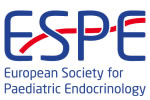hrp0097p1-110 | Growth and Syndromes | ESPE2023
Comparison of long-term height outcomes in pediatric patients with growth hormone deficiency receiving once weekly somatrogon with those of matched patients treated with once-daily somatropin in the Kabi/Pfizer International Growth Study (KIGS)
Paliwal Yuvika , Carlsson Martin , Zhang Richard , Lee Peter , Korth-Bradley Joan , Taylor Carrie , Cara Jose
hrp0089p2-p352 | Sex Differentiation, Gonads and Gynaecology or Sex Endocrinology P2 | ESPE2018
A Systematic Review of Reported Outcomes for Hypospadias
Leunbach Tina Lund , O'Toole Stuart , Springer Alexander , Williamson Paula , Ahmed S Faisal
hrp0097p2-250 | Late Breaking | ESPE2023
Update on the Etiological Diagnosis of Central Precocious Puberty in Both Sexes
Canton Ana , Claudia Latronico Ana , Montenegro Luciana , Piovesan Maiara , Faria Aline , Tinano Flavia , Pedrosa Ludmila , Seraphim Carlos , Mendonça Berenice , Brito Vinícius
hrp0092p1-235 | Growth and Syndromes (to include Turner Syndrome) (1) | ESPE2019
Development of a Measure for the Impacts of Achondroplasia on Children's Daily Functioning and Well-Being
Pfeiffer Kathryn M. , Brod Meryl , Viuff Dorthe , Ota Sho , Gianettoni Jill , Leff Jonathan
hrp0095p1-241 | Diabetes and Insulin | ESPE2022
3 Screen ICA TM Elisa - A New Tool for Identify Pre-Clinical Diabetes in First-Degree Relatives of Patients with Type 1 Diabetes (Pre-D1Abetes Study)
Noiszewska Klaudyna , Bossowski Artur , Zasim Aneta , Jamiołkowska-Sztabkowska Milena , Polkowska Agnieszka , Mazur Artur , Brzuszek Marta , Fichna Piotr , Niechciał Elżbieta , Szalecki Mieczysław , Wysocka-Mincewicz Marta , Myśliwiec Małgorzata , Żalińska Magdalena , Szmigierko-Kawko Małgorzata , Noczyńska Anna , Zubkiewicz-Kucharska Agnieszka , Chobot Agata , Górska-Flak Karolina , Ochab Agnieszka , Szadkowska Agnieszka , Wyka Krystyna , Pietrzak Iwona , Pilecki Olgierd , Jarosz-Chobot Przemysława , Rusak Ewa , Beń-Skowronek Iwona , Sieniawska Joanna , Szypowska Agnieszka , Nazim Joanna , Walczak Mieczysław , Jóźwa Anita , Marcinkiewicz Katarzyna , Powell Michael , Amoroso Marie , Rees Smith Bernard , Furmaniak Jadwiga
hrp0086p2-p264 | Diabetes P2 | ESPE2016
Clinical, Biochemical, Genetic and Immunological Features of Mexican Recent-Onset Type 1 Diabetes Patients
Perez Marco Antonio Morales , Herrera Blanca Estela Aguilar , Castaneda Mayra Cristina Torres , Paulin Lorena Lizarraga , Diaz Rita Angelica Gomez
hrp0082p3-d2-781 | Fat Metabolism & Obesity (1) | ESPE2014
Relationship Between Adiposity Degree and Physical Activity and Inactivity Among Children and Adolescents
Leis Rosaura , Vazquez-Cobela Rocio , Bedoya Juan Jose , Seoane Luisa Maria , Barja-Fernandez Silvia , Aguilera Concepcion , Olza Josune , Bueno Gloria , Gil-Campos Mercedes , Castro-Feijoo Lidia , Moreno Luis , Gil Angel , Tojo Rafael
hrp0082p3-d3-836 | Growth (2) | ESPE2014
What is the Profile of Gigantism: Seven Observations
hrp0084fc13.3 | Thyroid | ESPE2015
Targeted Next-Generation Sequencing Demonstrates High Frequency of ‘Dyshormonogenesis Genes’ Mutations in Severe Congenital Hypothyroidism
Makretskaya Nina , Bezlepkina Olga , Kolodkina Anna , Kiyaev Alexey , Vasilyev Evgeny , Petrov Vasily , Kalinenkova Svetlana , Duhoreva Olga , Malievsky Oleg , Dedov Ivan , Tiulpakov Anatoly
hrp0097p1-196 | Thyroid | ESPE2023
Clinical Pattern and management attitudes of Paediatric Graves' Disease in Saudi Arabia, A 10-Year Experience
Mulla Jaazeel , Al Shaikh Adnan , Aldubayee Mohammad , AlNoaim Khalid , Hakim S , Babiker Amir



